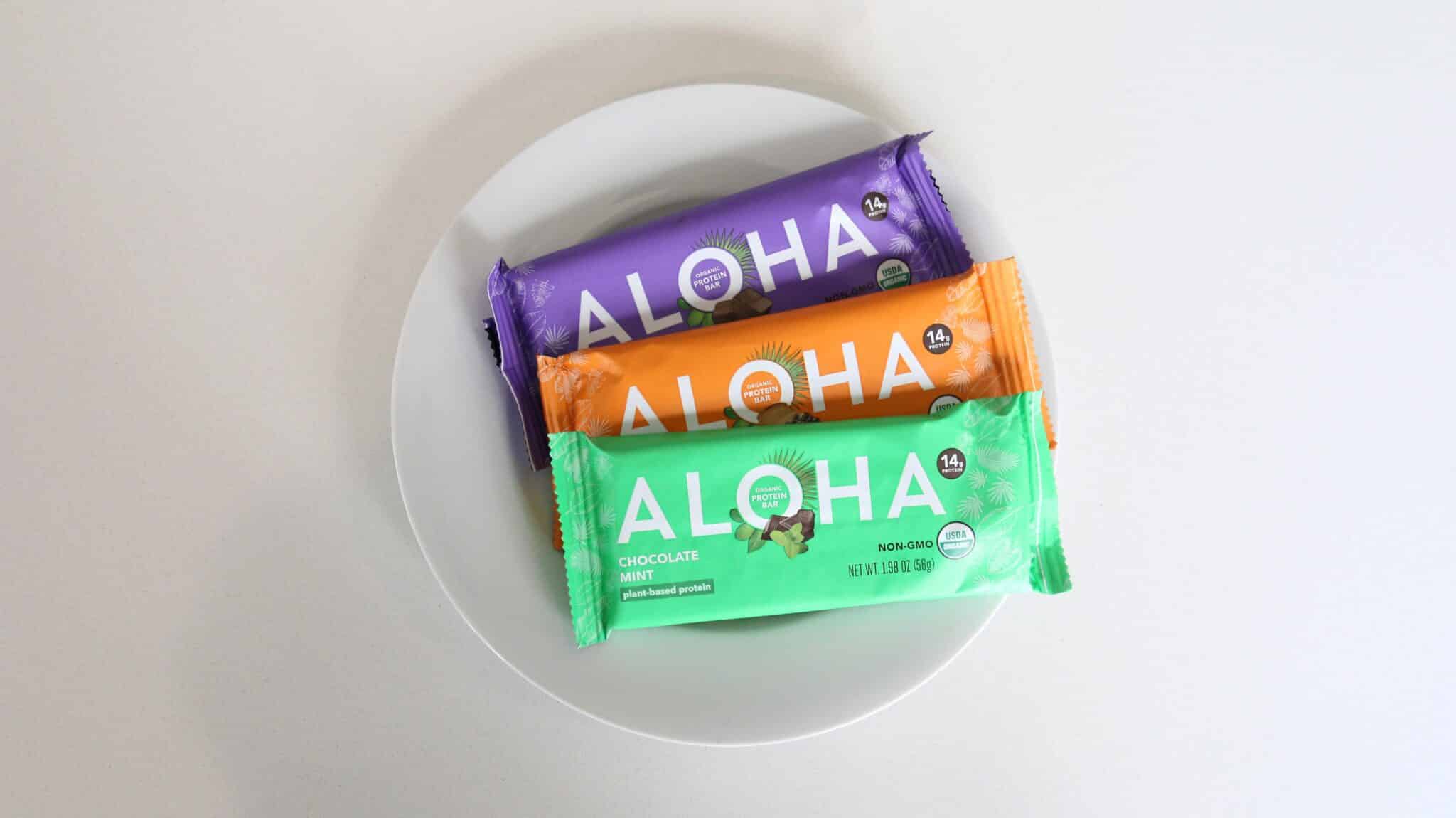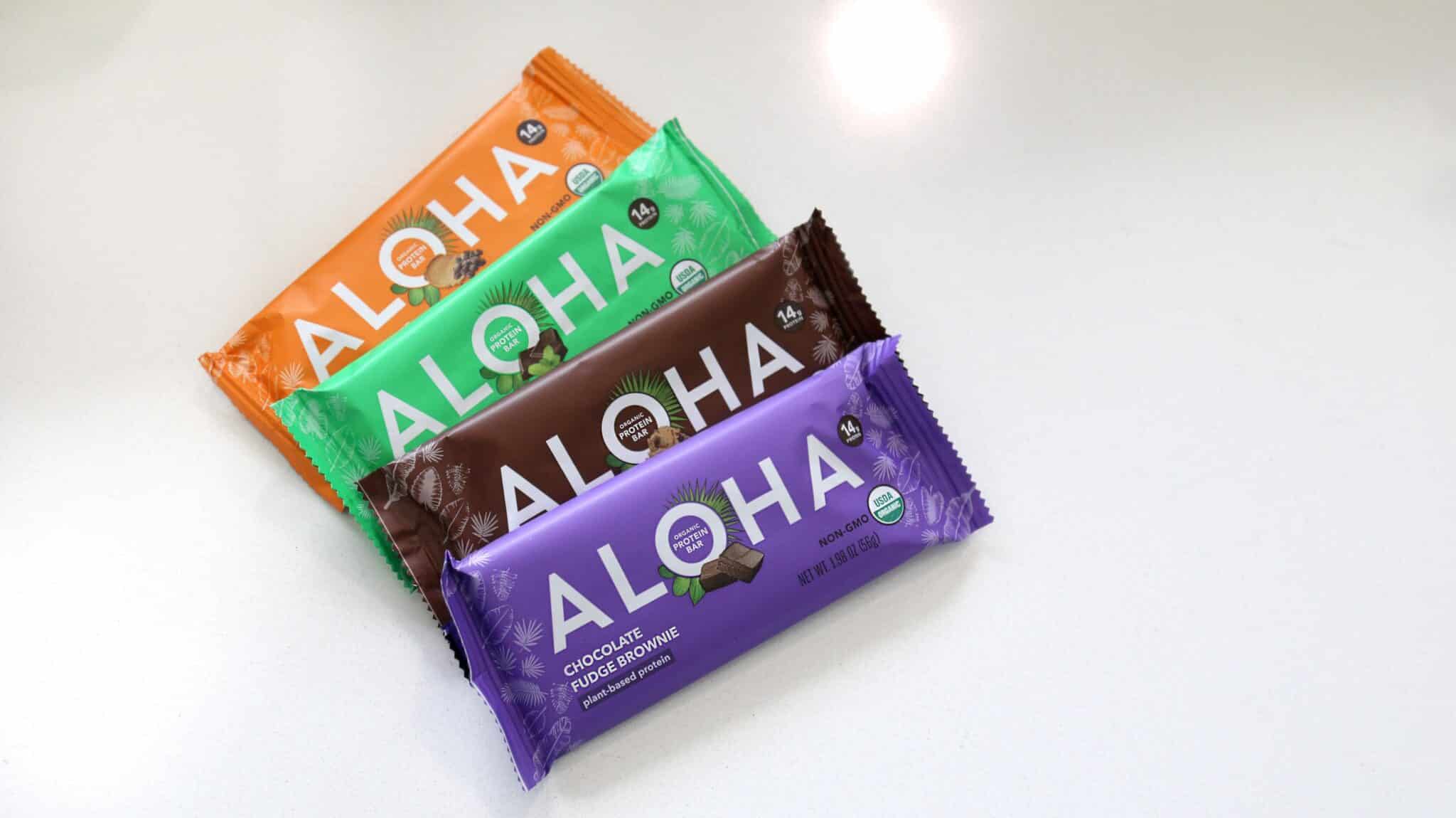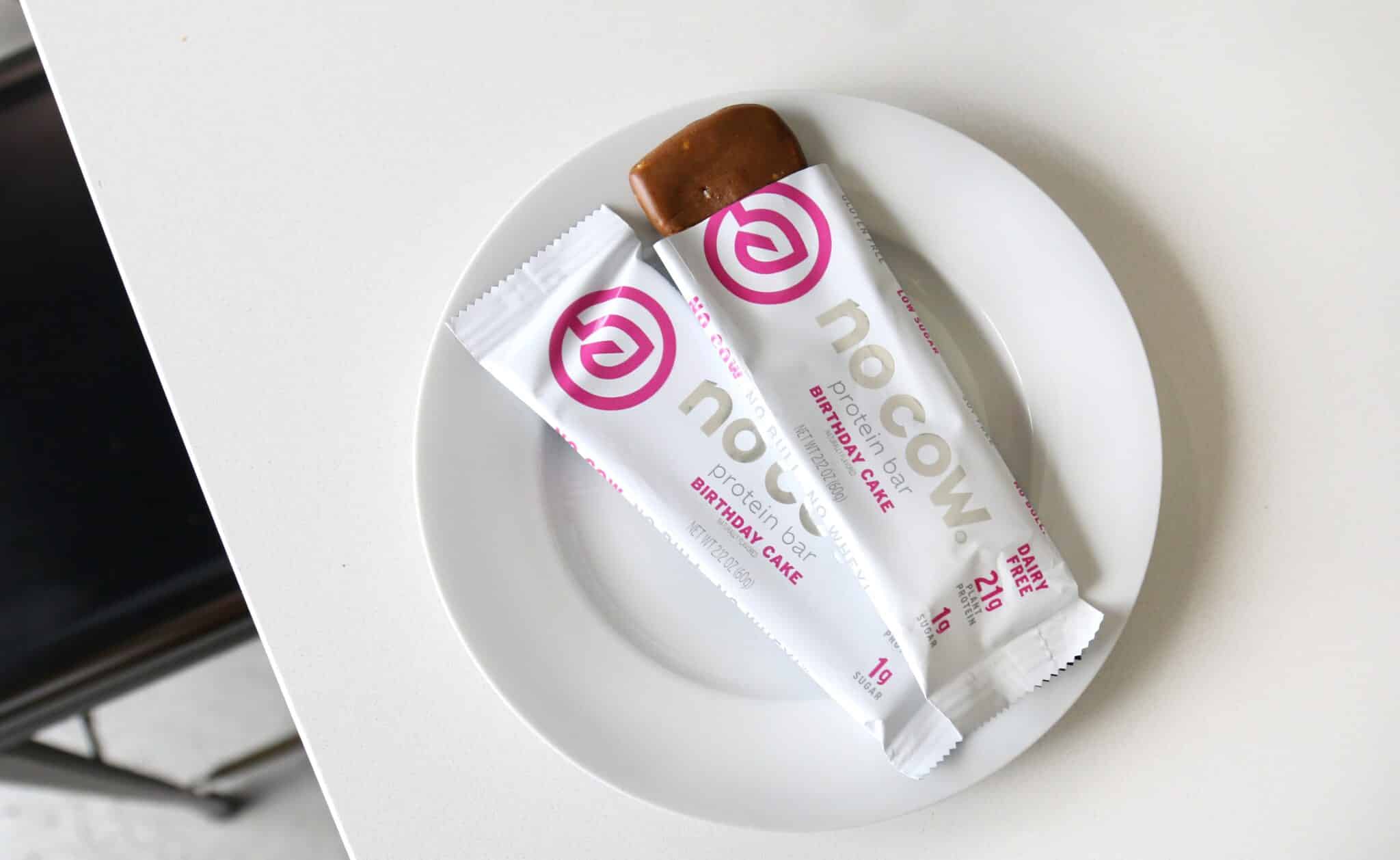

While any ol’ protein bar offers convenience, not all bars are created equal in terms of overall nutritional value and, certainly, overall level of sustainability and eco-friendly production. So, which are the best vegan protein bars on the market?
Finding the right protein bar can be hard, and the job is even tougher when you’re a vegan. That’s because many of the top bars on the market today are made with non-vegan ingredients, whether that’s honey, whey protein, or milk.
We’ve done a little detective work for you, testing out some of the best, most filling, most sustainable, and more nutritious vegan protein bars available today. These are a few of our picks.
Our Picks for the Best Vegan Protein Bars
Each product featured here has been independently selected by the writer. If you make a purchase using the links included, we may earn commission.
1. Aloha Organic Protein Bars

Vegan, gluten-free, low-carb, and low-sugar, Aloha bars are one of the best vegan protein bars if you want a healthy dose of protein (14 grams) without too many additives or synthetic chemicals. They come in several great flavors, too. Our favorites are chocolate mint and peanut butter, but we encourage you to try any that sound good to your palette.
2. No Cow Protein Bar

It’s right there in the name: No Cow bars are totally dairy-free, in addition to being gluten-free, kosher, and non-GMO. But boy, do they pack a lot of nutritional punch. Each bar comes with 19 grams of fiber, 20 grams of protein, and a scant 190 calories per serving. There’s a lot to love about the No Cow bars, and we haven’t even touched on the amazing array of flavors.
3. Shanti Bars

Each Shanti Bar has 17 grams of plant-based protein, making them a great option when you only need a nibble of something to get you from meal to meal. The vegan credentials are off the charts: Shanti bars are organic, gluten-free, sustainably sourced, and made without any refined sugars. The nut butter chocolate chip maca flavor is especially tasty.
4. Vega 10g Protein Bar

We love the Vega 10g bars not only because of their simplicity, but also their great flavor. You can pick them in chocolate peanut butter, chocolate caramel, blueberry oat, or coconut almond, and we’ll vouch that all are really yummy. With any option, you’ll get 10 grams of plant-based protein, plus four grams of fiber. A great snack item for anyone who wants their protein bars to be vegan, dairy-free, non-GMO, and altogether tasty.
5. GoMacro Organic Vegan Protein Bars

GoMacro’s protein bars are both filling and energizing. We love using them to begin the day, as they help give us the push we need to start the morning’s activities with plenty of focus and stamina. Each one is made with 10 to 12 grams of plant-based protein and is completely vegan. Again, there are loads of flavor options. Our top pick: blueberry with cashew butter.
6. Evo Hemp Bars

Looking for a protein bar that’s not only vegan-friendly, but also offers the natural power of hemp protein? Evo’s product line is one of our favorites. These bars are noteworthy for offering plenty of omega-3 fatty acids, too, which can help naturally reduce inflammation. There are plenty of other nutrients packed into these bars, too, along with some excellent natural flavors, making them high on our list of best vegan protein bars.
7. Rise Bars

If you’re looking for simplicity, give Rise Bars a try. They’re made with four simple ingredients yet have an impressive 15 grams of plant-based protein per bar. There’s just something refreshing about these simple vegan bars, especially if you opt for a light flavor like lemon cashew.
8. 22 Days Nutrition Organic Protein Bar

If it’s flavor you’re after, the 22 Days lineup has a lot of enticing options: Peanut butter chocolate chip, salted caramel, fudge brownie, you name it. This is one of our top options for sweet tooths, but we’ll also note how much we appreciate the balanced nutritional contents. There’s even a high iron quotient here, which is something many vegan diets tend to lack.
9. Raw Rev Glo Protein Bars

Raw Rev Glo makes some of the best vegan protein bars that are loaded with superfoods; you’ll find amazing, plant-based nutrients here, along with delicious flavors and an appealing texture. Each bar has 11 grams of protein plus 13 grams of fiber, which means it has a high overall nutritional value. These bars are an altogether wholesome and eco-friendly way to add some protein to your daily diet.
10. Pegan Thin Protein Bars

Looking for a low-carb option? You’ll find just a single net carb in each Pegan bar, yet there is plenty in the way of protein and fiber. Specifically, they are rich in prebiotic fiber, which can help you sustain that helpful bacteria in your gut, easing the digestion process. We also like that these bars offer some flavors you don’t see from other brands, like the tasty ginger snap option.
Start Snacking on a Vegan Protein Bar
As you consider your options for different vegan protein bars, there are a lot of factors to consider, including flavor, total fiber content, and more. One thing you can feel confident about is that each of the bars we’ve recommended here is fully compliant with a vegan diet. And all are made with admirably earth-friendly practices.
These are bars you can feel good about any time you need to reach for that fast vegan breakfast or that afternoon pick-me-up. Try one of the best vegan protein bars today and see which ones you like the most.
Josh Hurst is a journalist, critic, copywriter, and essayist. He lives in Knoxville, TN, with his wife and three sons. As a writer and independent reviewer of CBD products, Josh covers the relationship between natural wellness products and the human body. His writing has appeared in Health, Shape, and Remedy Review.
- 12 Healthy Granola Bars - EcoWatch
- Vegan Diet Year-Round, on Race Day, and During Recovery ...
- Vegan Pre-Training or Competition Meals - EcoWatch
- 10 Best Healthy Vegetarian Snack Ideas Plus The Best Brands

 233k
233k  41k
41k  Subscribe
Subscribe 